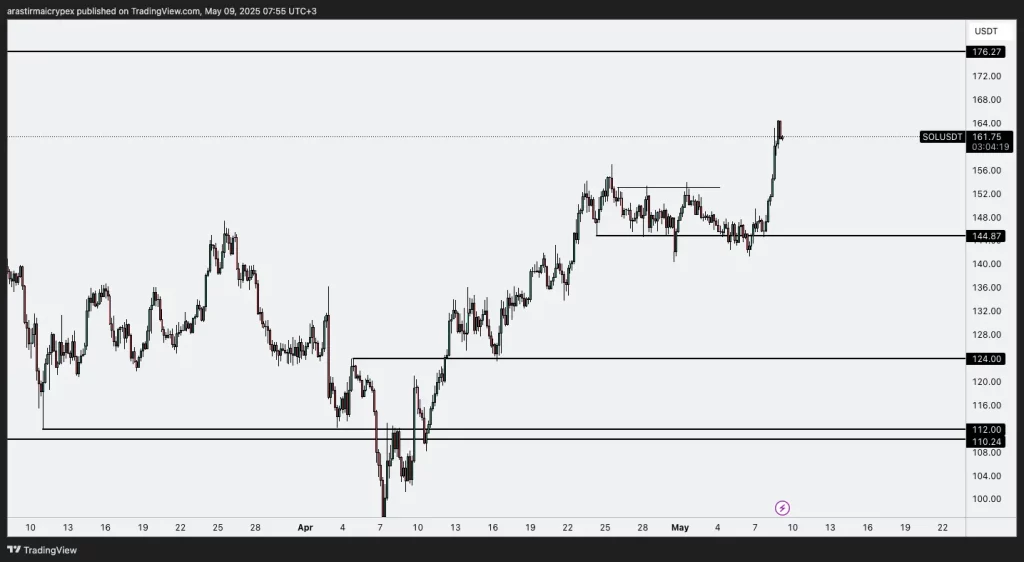Ethereum Experiences Biggest Rise in 4 Years with Pectra Update – SEC and Ripple Reach $50 Million XRP Lawsuit Settlement
Ethereum Experiences Its Biggest Gain in 4 Years with Pectra Update
Ethereum (ETH) gained 20 percent to surpass the $2,200 level after the major Pectra update was activated on Tuesday. This rise represents the biggest daily gain since 2021. Experts say ETH has been lagging behind Bitcoin for a long time and that the update has increased investor confidence and created buying pressure.
The Pectra update is seen as the most important technical innovation for the Ethereum network since Merge in 2022. The update aims to increase staking efficiency, validator management, and Layer 2 scalability. This development, which also started a rise in altcoins, combined with positive macroeconomic news such as the resumption of US-China trade talks, increased risk appetite in the crypto market.
SEC and Ripple Reach $50 Million XRP Lawsuit Agreement
The US Securities and Exchange Commission (SEC) and Ripple Labs have reached an agreement in the lawsuit filed in 2020 regarding $1.3 billion in XRP sales. Ripple will conclude the case by paying $50 million to the SEC. A judge had previously imposed a $125 million fine, but the remaining $75 million will be returned to Ripple as part of the agreement. This development comes amid a new era in which the SEC has adopted a softer stance towards crypto.
The accusations against Ripple were that securities laws were violated in the sales of XRP to institutional investors. However, with the decision taken in 2023, the sale of XRP to individual investors on exchanges was not considered a security. This decision, which was welcomed in the crypto sector, raised hopes that regulatory uncertainty would decrease in the sector. Following the news, the XRP price rose to $ 2.30.
US Senate Backfires on Stablecoin Bill, Process Delayed
The bill containing stablecoin regulation in the US Senate could not pass the 60-vote threshold due to the resistance shown by Democrats at the last minute and could not move on to the discussion phase. The vote, which resulted in 48 in favor and 49 against, took place at a critical turning point for the sector. It was noteworthy that both Republican senators voted against the bill, and Senate Majority Leader John Thune cast a tactical “no” vote with the intention of bringing the bill back to the agenda in the future.
Democratic senators demanded more legal security measures, especially citing Donald Trump’s ties to the crypto industry. Some senators argued that the bill was rushed and called for the process to be delayed. Republicans, on the other hand, stated that the bill was the product of months of bipartisan work, emphasizing that this attitude puts industry innovation and the financial future of the US at risk. The controversial bill is expected to return to the Senate agenda in the coming days.
Oregon Grants Legal Ground for Digital Assets
Oregon has passed Senate Bill 167, which legalizes the use of digital assets in commercial transactions. The new law added Article 12 for Digital Assets to the Uniform Commercial Code (UCC), establishing the legal definition of digital elements such as cryptocurrencies, tokens and electronic money. It also allowed the use of digital assets as collateral, and electronic records and signatures were officially recognized.
This regulation clears up uncertainties about how digital assets will be controlled, transferred, and secured. Another bill introduced in the state, House Bill 2071, aims to protect and encourage the use of digital assets. This bill aims to ensure individuals’ right to receive payments with digital assets and conduct peer-to-peer transactions on blockchain networks.
OCC Gives Crypto Authority to Banks
The U.S. Office of the Comptroller of the Currency (OCC) has announced that national banks can buy and sell crypto assets on behalf of their customers and outsource these services to third parties. The new guidance re-allows banks to offer crypto custody and transaction services, reversing previous restrictions.
The decision signals a more positive attitude toward digital assets among U.S. financial regulators. The Federal Reserve and FDIC also recently lifted similar restrictions. This has made it easier for banks to access crypto, while paving the way for institutional adoption of the sector.
Visa Winks at Crypto Infrastructure with Investment in BVNK
Visa has increased its interest in stablecoin infrastructure by making a strategic investment in London-based fintech startup BVNK. Although the amount of the investment was not disclosed, it was stated that it came after BVNK’s $50 million Series B round in December. BVNK is developing a blockchain-based, 24/7 real-time payment network for businesses. This move follows Visa’s collaboration with Stripe’s unit Bridge just last week to offer stablecoin services in Latin America.
Visa’s head of growth products and partnerships, Rubail Birwadker, emphasized that stablecoins have become an important part of global payment flows, and stated that Visa is investing in next-generation technologies like BVNK to maintain its leadership in this area. The investment is part of Visa’s goal to expand stablecoin-based payments, while rival Mastercard is similarly expanding its digital asset payment solutions.
Stripe Unveils Stablecoin Feature After $1.1 Billion Acquisition of Bridge
Stripe has introduced a new money management system that works with dollar-backed stablecoins after acquiring the stablecoin platform Bridge for $1.1 billion. This new product, called “Stablecoin Financial Accounts,” allows businesses in 101 countries to hold balances in stablecoins such as USDC and USDB and to receive and send payments via both crypto and fiat infrastructures. Stripe says this solution will provide easier access to the global economy, especially for entrepreneurs in countries affected by economic volatility.
Stripe also announced a new artificial intelligence payment model that is expected to increase fraud detection and payment approval rates. The company describes this model as a “world first” and emphasizes that it was trained with billions of transaction data. CEO Patrick Collison stated that both artificial intelligence and stablecoins have radically transformed the economic order and that Stripe is strongly positioned in these two areas.
Wellgistics Health Switches to Using XRP in Payments
Health infrastructure company Wellgistics Health announced that it will integrate XRP and related blockchain technologies into its payment system. The company stated that thanks to XRP’s low transaction costs and instant transaction finality, payments between pharmacies, medical suppliers and pharmaceutical manufacturers will be faster and more efficient. CEO Brian Norton emphasized that they are investing in infrastructure, saying, “The winners in healthcare will not be those with the biggest buildings, but those with the fastest infrastructure.”
This step aims to reduce delays and costs, especially in cross-border payments. XRP’s blockchain-based payment infrastructure offers faster and cheaper solutions compared to ACH and wire transfer methods offered by traditional systems. This development shows that crypto is increasingly being adopted in traditional areas such as the healthcare sector.
——————————————————————————————
BITCOIN (BTC)
BTC is trading at $ 102,750 as of the morning hours, losing 0.49%. Following the closes above the 95,000 level on the BTCUSDT side, the price moved up to the 102,793 level with the rise. With this movement, the price is approaching the 109,575 main resistance zone, which has been tested many times in the past. Although an increase area seems open to this level technically, it should be monitored whether it can be sustained above the psychological level of 100,000. In possible corrections, 95,000 and 91,960 levels may work as support.
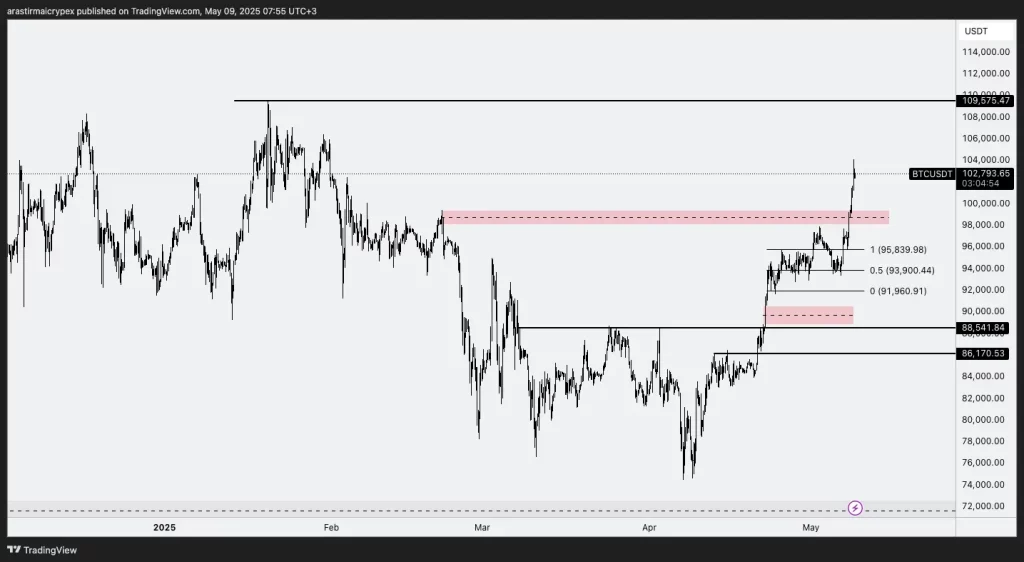
ETHEREUM(ETH)
ETH is priced at $ 2,213 as of the morning hours with a 0.28% gain in value. ETHUSDT left behind the horizontal squeeze above the 1,957 level with a volume break and rose to the 2,215 level. This region is technically one of the important resistances from the past. Crossing the 2,314 level upwards may cause the trend to accelerate further. However, the price may be expected to consolidate or correct in this region. In pullbacks, 2.104 and 1.957 levels can be monitored as support, respectively.
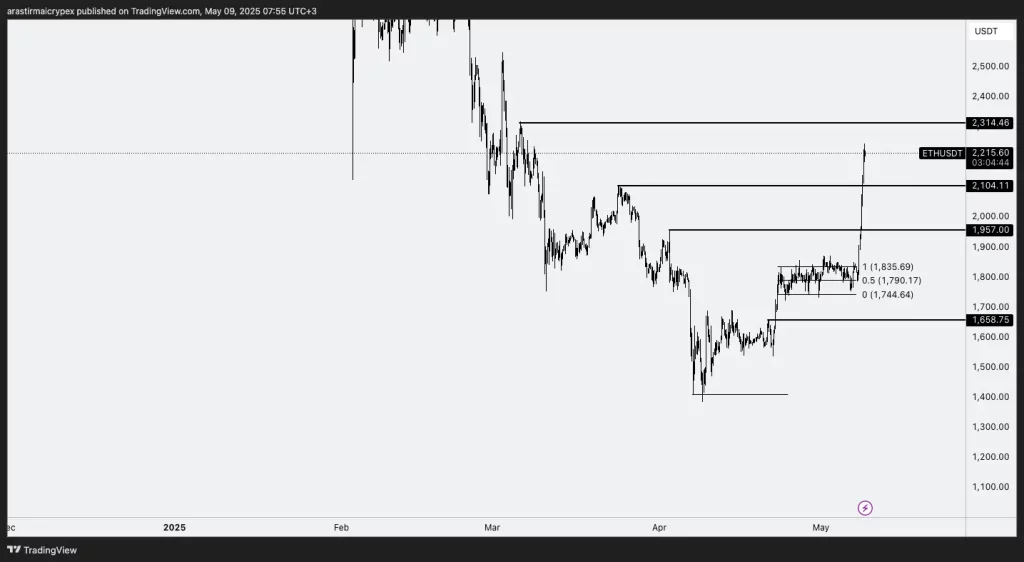
RIPPLE(XRP)
XRP is trading at $ 2.29 as of the morning hours with a 1.17% loss in value. XRPUSDT carried the rise it started from the 2.1139 level to the 2.3630 resistance. It is possible to see short-term profit realization when the price reaches this level. In downward movements, the first support will be 2.2330 and then 2.1139 levels. The uptrend may continue especially as long as the 2.1139 support can be maintained. Closing above 2.3630 may trigger searches for new peaks.
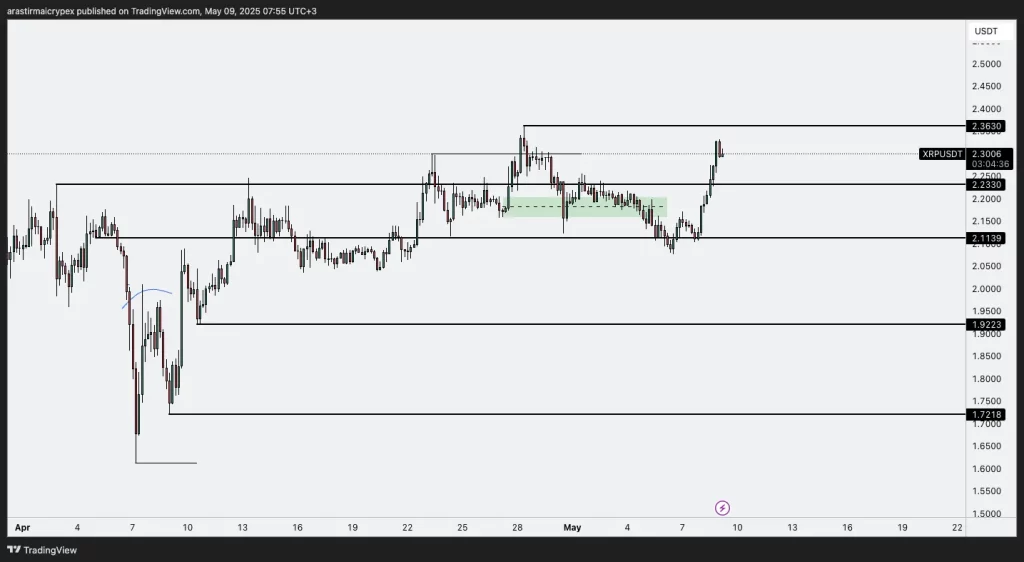
AVALANCHE(AVAX)
AVAX is trading at $ 22.07 as of the morning hours, losing 0.41%. AVAXUSDT showed a rapid rise with the support it received from the demand zone at 20.00 and reached the level of 22.07. The 23.03 resistance, where selling pressure was previously seen in this region, is of critical importance. If the buyers break this zone, a wider rise area may open. On the other hand, in possible corrections, the 20.00–20.50 range may be tested again and this level should be followed as a strong support area.
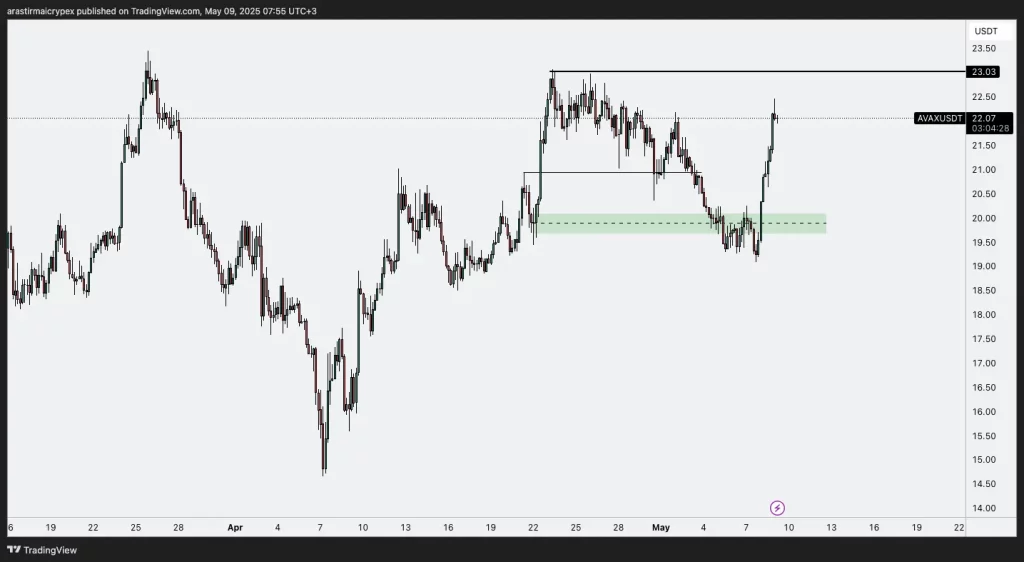
SOLANA(SOL)
SOL is trading at $ 161.85 as of the morning hours, losing 1.59% of its value. The breakout of the horizontal resistance at 144.87 on the SOLUSDT side brought about a sharp increase in volume. This region had previously worked as both support and resistance, so it is not surprising that the price quickly moved to 161.75 levels after the breakout from a technical perspective. For now, the 176.27 resistance is in the foreground in the short term and it is possible for the price to accelerate towards this level. However, the 144.87 level is now the main support level and it should be carefully monitored whether this area can be maintained in possible pullbacks.
